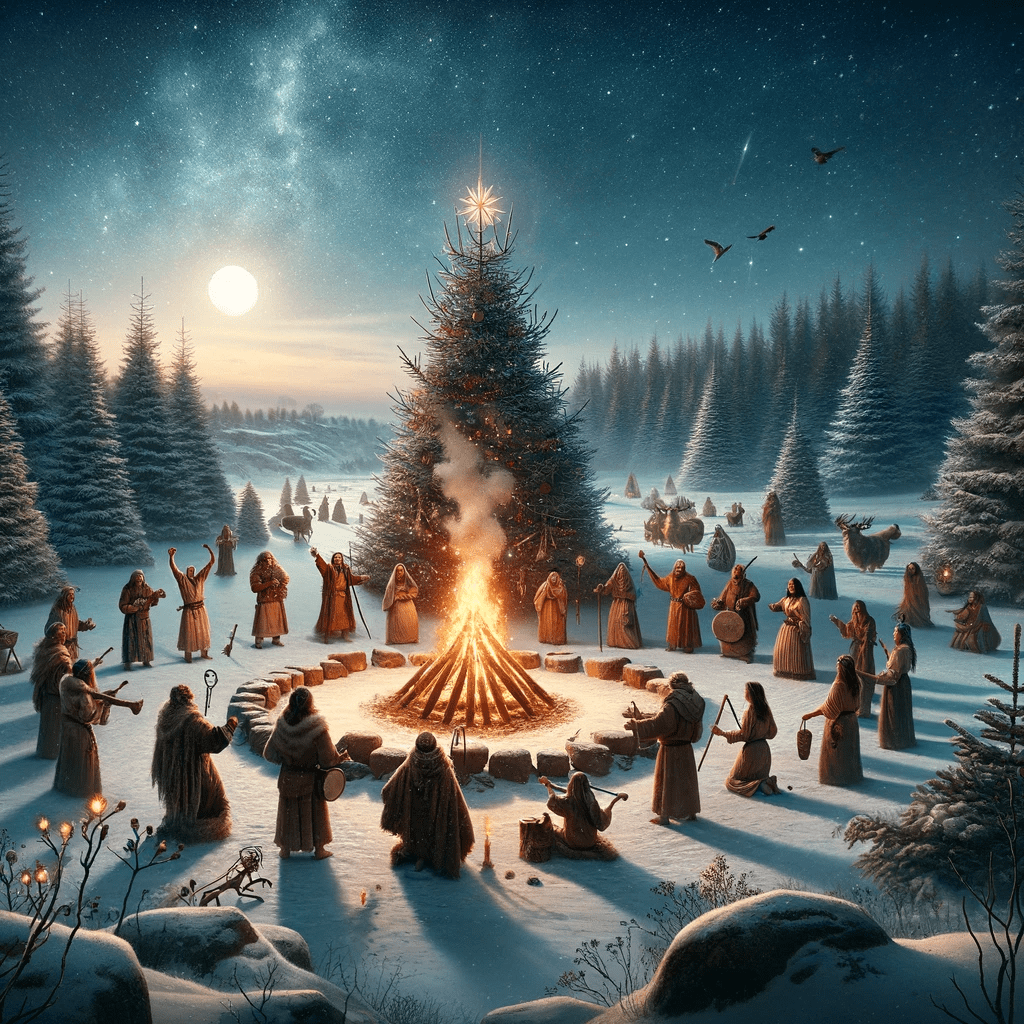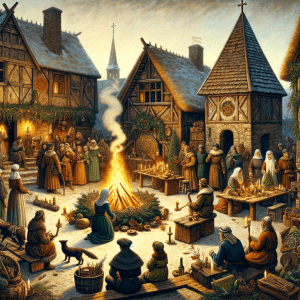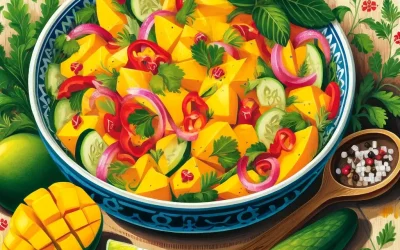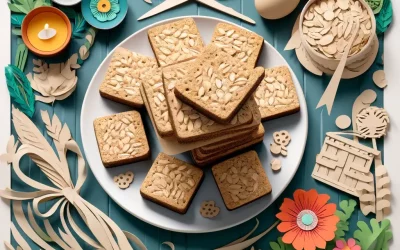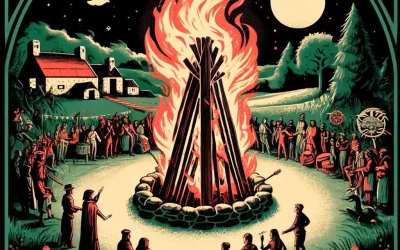Yule in Ancient Times
Long before malls decked their halls and Mariah Carey took over holiday playlists, Yule was the OG winter celebration. Rooted in Pagan rituals, this was the time when ancient folks said, “Hey, let’s light up a log and party, because the sun’s coming back!” It was all about marking the Winter Solstice, the shortest day and longest night of the year.
The Transformation Over Centuries
As history marched on, Yule got a makeover – think less Druid and more Hallmark, but with deeper roots. The Christianization of Europe meant Yule and Christmas started to share closet space. Despite this, Yule held onto its core – celebrating rebirth and renewal, which, let’s face it, we could all use after a year of adulting.
The Early Days (Up to 4th Century):
Back when Rome was busy doing its empire thing, and Druids were more than just characters in fantasy novels, Yule was pure Pagan fun. Think big bonfires, feasts, and maybe a cheeky toast to the gods. It was all about celebrating the winter solstice, the earth’s rhythm, and the sun’s return.
The Early Middle Ages (5th to 10th Century): 
During the Early Middle Ages, as Christianity steadily spread across Europe, the observance of Yule began to undergo significant transformation. This era witnessed a gradual intertwining of Yule, a pagan festival centered around the winter solstice, with Christian traditions. Pagan rituals celebrating the rebirth of the sun and the renewal of life started to merge with Christian narratives of hope and resurrection. This period was less about a sudden fusion and more about a gradual, nuanced blending of beliefs and customs, reflecting the time’s complex cultural and religious shifts.
High and Late Middle Ages (11th to 15th Century):
In the High and Late Middle Ages, the evolution of Yule continued against the backdrop of Europe’s deeper Christianization. During this time, Yule, with its ancient roots in winter solstice celebrations, increasingly became incorporated into the broader fabric of Christmas festivities. This era marked a shift where Yule traditions began to be reinterpreted through a Christian lens. Elements of the old pagan festival, like feasting and merrymaking, were adapted into the Christmas celebrations, symbolizing a gradual but persistent fusion. However, beneath the Christian veneer, many of the pagan aspects of Yule persisted, reflecting the resilience of these ancient traditions in the face of changing religious landscapes.
The Renaissance and Reformation (16th to 17th Century):
Here’s where things got a bit more complicated. The Protestant Reformation was like the big season finale where some traditions were questioned, others were adapted, and Yule had to navigate these changing tides. While some purists were trying to ‘cleanse’ the festivities of their Pagan elements, Yule traditions proved to be more resilient than a cat in a YouTube video.
The Victorian Era (19th Century):
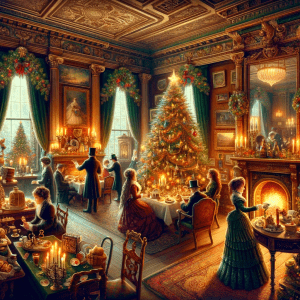
Ah, the Victorians were like the influencers of historical holiday celebrations. This era brought a Yule renaissance, romanticizing and reviving many ancient traditions. The Yule log, mistletoe, and even the Christmas tree got a Victorian makeover. Yule was now part of the quintessential Christmas but with a nostalgic nod to its Pagan past.
Modern Times (20th Century to Present):
Fast forward to the present, and Yule’s like that classic song that gets remixed every few years. It’s seen a revival, especially within the Pagan and neo-pagan communities, as a celebration of nature, heritage, and spirituality. And let’s face it, in our world of endless Zoom calls and social media, a bit of ancient winter magic and a nod to natural cycles is like a breath of fresh, frosty air.
Yule Across Cultures
From the Vikings throwing a Yule bash (probably not like the ones in your college days) to Romans having a feast at Saturnalia, Yule was the ancient version of trending globally. Each culture added its own flavor, like a potluck dinner where everyone brings their best dish.
The Norse and Germanic Tribes
Viking Yule: In the Nordic lands, Yule (or “Jól”) was a significant winter festival. Vikings celebrated with feasts, boasting, and toasts to the gods, particularly Odin, who was associated with Yule. The Yule log tradition originated here, symbolizing warmth and light in the darkest time of the year. 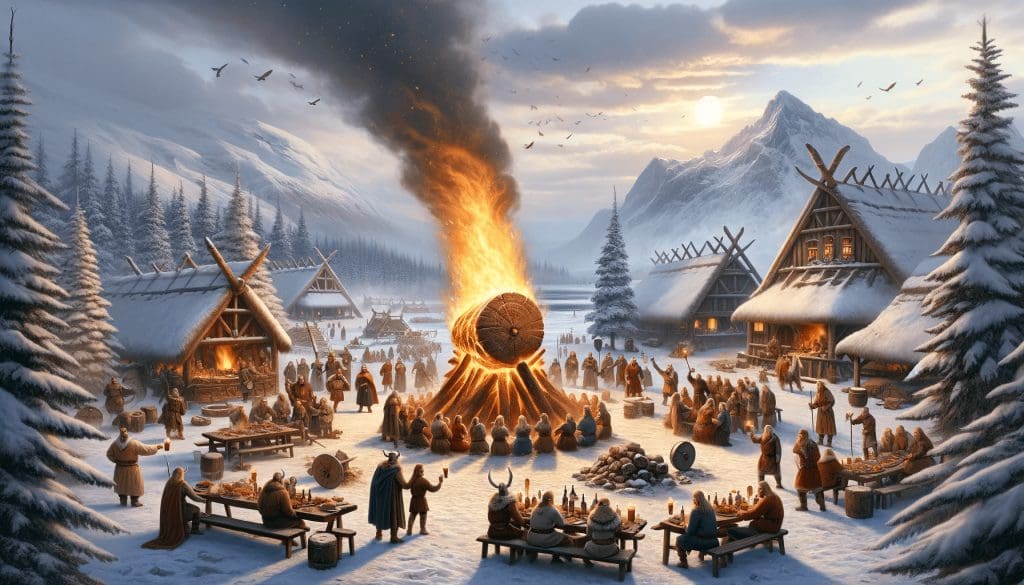
The Celts and Druids
Celtic Midwinter: The winter solstice was deeply significant for the Celts and Druids. They observed it as a time of rebirth and renewal, with rituals to honor the sun’s return. Their celebrations likely included fires, storytelling, and feasting, all elements that influenced later Yule traditions.
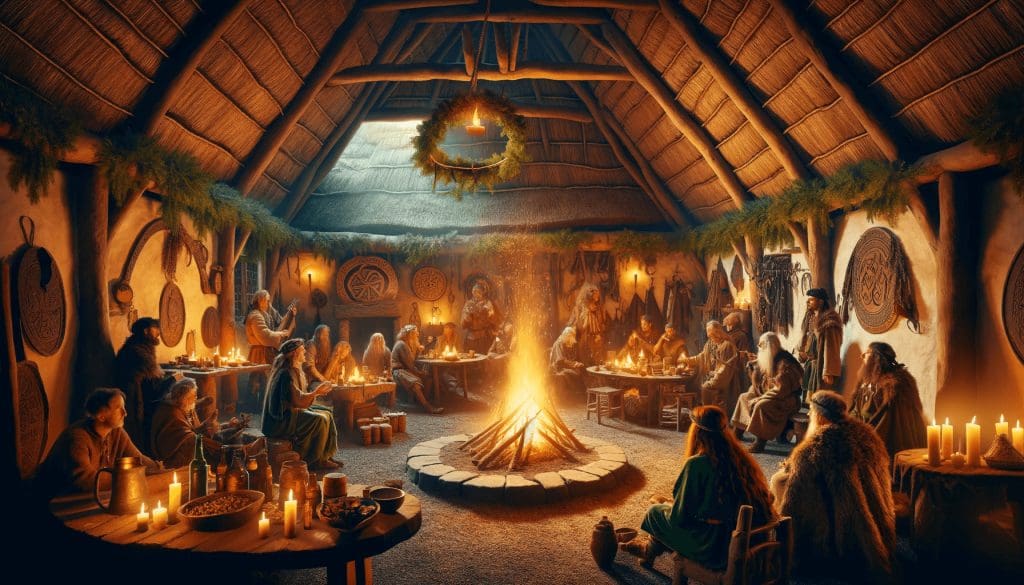
The Romans
Saturnalia Festival: Although not Yule per se, the Roman Saturnalia shared similarities with Yule traditions. This festival honored Saturn, the god of agriculture, and was marked by a period of merriment, socializing, and gift-giving. The concept of reversing roles (slaves being served by their masters) during this festival added a unique flavor to the season’s celebrations.
The Anglo-Saxons
Anglo-Saxon Yule: The Anglo-Saxons celebrated “Geol,” which later became “Yule” in English. This celebration was intertwined with their own midwinter traditions, including feasting, drinking, and possibly some form of the Yule log tradition, reflecting their own gods and beliefs.
The Slavic Peoples
Slavic Winter Festivals: The Slavic cultures had their own winter solstice traditions, which varied among tribes. They included rituals to ensure fertility and prosperity in the coming year, often involving elaborate customs, dances, and songs.
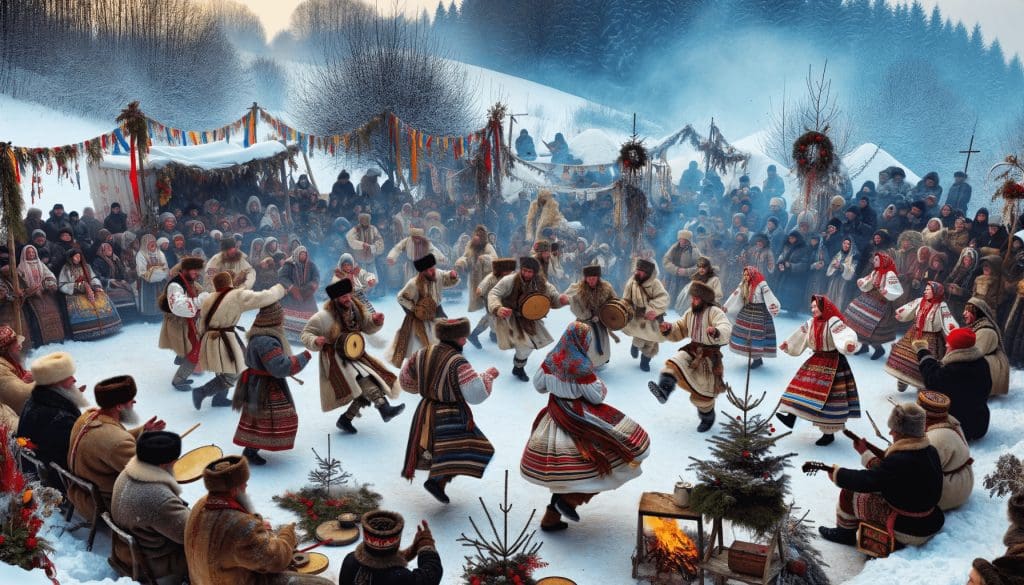
Christian Influence and Synthesis
The Christian Overlay: As Christianity spread, it absorbed and transformed many of these pagan traditions. The date of Christmas was set near the winter solstice, echoing ancient Yule customs. Over time, elements like the Yule log and festive feasts became part of Christmas celebrations, blending pagan and Christian traditions.
Shared Themes and Unique Practices
No matter where you landed on the ancient map, Yule was about light, joy, and getting cozy during the dark winter months. Whether hanging mistletoe in England or lighting candles in Pagan Rome, the vibe was unmistakably Yule – a global party, an ancient style.
The Modern Face of Yule
Yule in the Contemporary World
Fast forward to today, where Yule is like that indie band that went mainstream but still kept its soul. Modern Pagans are keeping the traditions alive, mixing ancient rituals with Instagram-worthy decor. It’s the perfect blend of spiritual depth and modern-day charm.
Adapting Ancient Traditions
These days, Yule is less about survival and more about spiritual vibes and eco-friendly celebrations. Think less “warding off evil spirits” and more “embracing inner peace and recycling.”
Integrating Traditions in Today’s Yule Celebrations
Whether you’re lighting a Yule log (or a Yule-scented candle for the less outdoorsy) or decking out your altar with crystals and evergreens, there’s room for both the mystical and the practical. It’s about creating a celebration that resonates with you, be it through meditation or munching on gingerbread.
The Yule Log, Reimagined
Let’s talk about the Yule log. In the past, you set this giant piece of wood on fire and hoped your house didn’t follow suit. Today, we’re more about that scented candle life – same woodsy vibe, less risk of becoming a firefighter’s case study. Whether you’re lighting an actual log or a candle that smells like pine trees and decisions, the essence is the same: bringing light and warmth into the darkest time of the year.
Altars and Ambiance: The Modern Twist
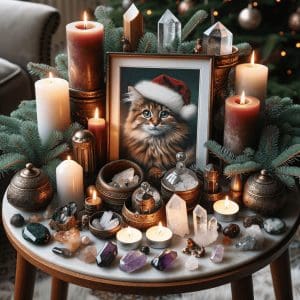
Yule altars aren’t just for the ancient druids anymore. It’s 2023, and your altar can be as unique as your Spotify playlist. Crystals? Sure. Evergreens? Absolutely. A photo of your cat wearing a Santa hat? Why not? It’s all about creating a space that feels sacred to you. It’s about blending the old (think: ancestral traditions) with the new (like that eco-friendly glitter you just bought).
Meditation and Mindfulness: The Inner Journey
If meditation is more your jam, Yule is the perfect time for some inner reflection. Picture this: you’re sitting comfortably, hot cocoa in hand, contemplating the cycle of the year. It’s like a mental detox, but you get to keep your phone on Do Not Disturb and nobody can judge you for it.
Feasting and Fun: The Gastronomic Gala:
Now, onto the food – because let’s face it, that’s half the fun. Yule feasting has evolved from medieval banquets to include whatever tickles your fancy. Vegan gingerbread, gluten-free Yule log cake, or a family recipe passed down like a culinary heirloom. It’s about savoring flavors and making memories, one bite at a time.
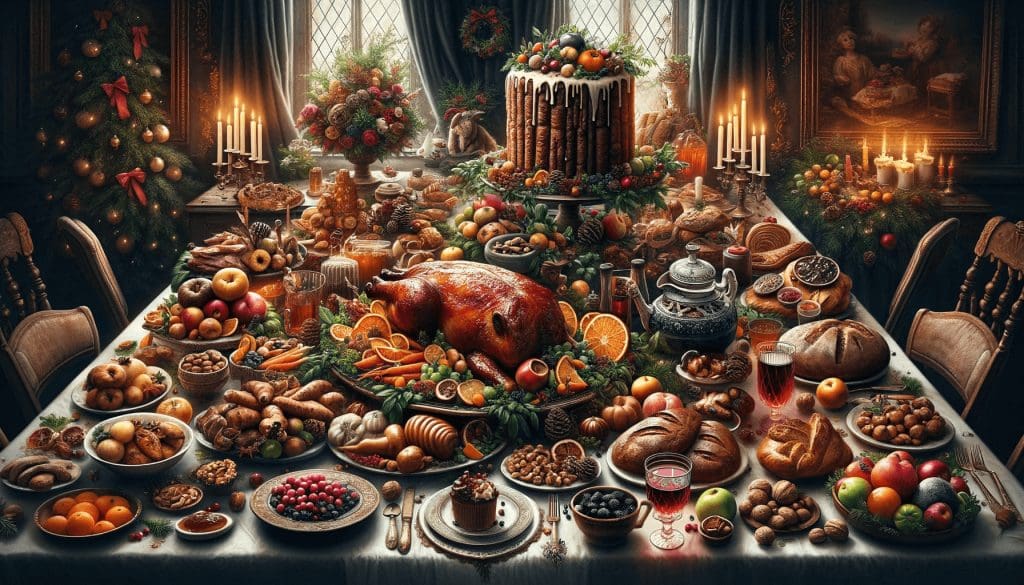
Community and Connection: Celebrating Together:
Yule, at its heart, is about community. Whether you’re gathering with your chosen family, connecting with friends over Zoom, or sending out Yule cards (because who doesn’t love getting actual mail?), it’s about sharing the love and light.
Crafting and Creating: The Hands-On Approach:
For the crafty ones, Yule is your DIY playground. Handmade decorations, Yule wreath-making, or knitting a scarf that you’ll probably finish by next Yule – it’s all about infusing your spirit into something tangible. Plus, it’s a great excuse to buy more arts and crafts supplies.
Yule for Everyone
Yule is like a buffet – there’s something for everyone. For families, it’s about creating traditions that’ll make the kids forget about their iPads. For the solo celebrators, it’s a chance to reflect, recharge, and maybe binge-watch some witchy shows.
Conclusion
So there you have it – a whistle-stop tour of Yule’s history and evolution. Whether you’re a die-hard Pagan or just Yule-curious, there’s a place for you in this ancient, yet ever-new celebration. Light a candle, pour some mulled wine, and let the longest night bring you a bit of magic and a lot of laughs.

